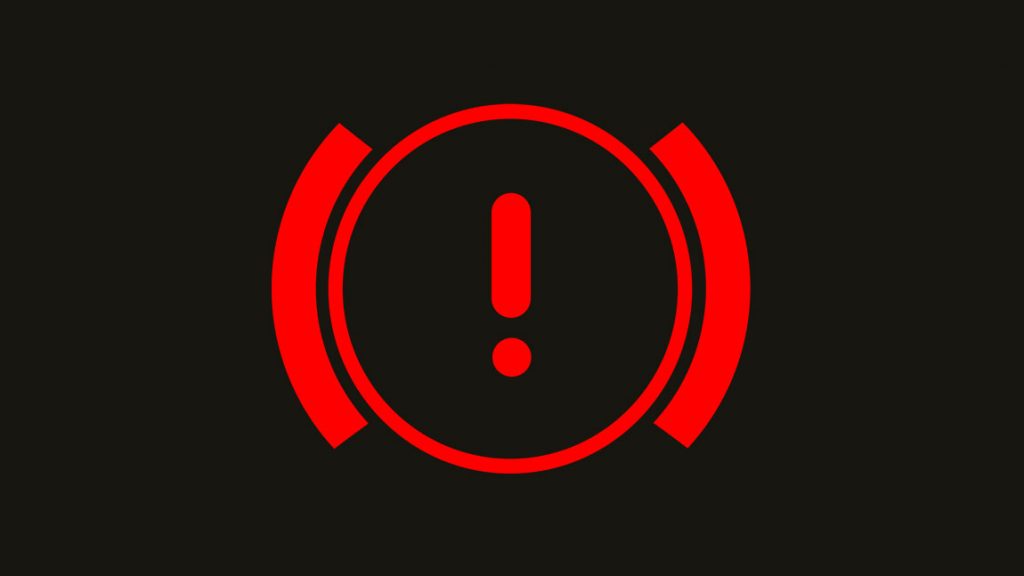We have all seen those different dashboard lights in cars, especially when you want to start your car. Or some of you might have seen them while driving your car, which could be a sign of a problem in your car. But the question is when a red dashboard light goes on, what should you do and what do the symbols mean? Find here the overview of 5 common and important dashboard lights in cars.
Yellow, green, white, blue and even red dashboard and warning lights regularly confuse drivers. Depending on the manufacturer, there are also different symbols on which the colors are highlighted.
However, if one of the dashboard lights goes on while driving, there is no need to be worried. The only exception is the red warning lights – and, to a lesser extent, the yellow lights. Here we have listed the meanings of the most important red dashboard lights in cars.
Red dashboard lights in cars: What is the correct reaction?
When a red dashboard light that flashes or lights up while driving is ignored, it can not only prove expensive but also dangerous. This is because red indicates serious problems or functional failures. That is why, with a few exceptions, the following applies: When the red warning light appears, the vehicle must be stopped as soon as it is safe to do so.
The most important red dashboard lights in cars at a glance
If the car has been stopped (and secured, if necessary), the vehicle manual will help if you are not sure what to do. The manual describes all the symbols and dashboard lights – including the red ones – in detail. Also, the further procedure is recorded there. Here is a compact overview of what the 5 most important red dashboard lights in cars mean and how to react to them correctly.
Brake system
There are two possible causes here: The handbrake is still engaged – which is the lesser of two evils and can be quickly fixed. If the symbol is still illuminated after the handbrake has been released, this may be an indication of worn brake pads or insufficient brake fluid. The potential consequence is brake failure.
What is the right thing to do?
Disengage the handbrake if it is applied. If that is no longer the case and the symbol still lights up red: immediately stop the vehicle as soon as it is safe to do so. Secure the vehicle – and call roadside assistance.
Oil level/oil pressure
Not enough oil, a leaking oil circuit, a defective oil pump or even bearing damage: There are a variety of possible causes for the red oil can light up. But one thing is certain: the oil pressure in the engine is too low, and the moving parts in the engine no longer run smoothly. The possible consequence: engine damage.
What is the right thing to do?
As soon as it is safe to do so, stop and top up the oil. Alternatively, you can call a roadside assistance service for help.
Coolant temperature
When the coolant temperature is too high, or when the sensor is faulty, this symbol lights up. If the coolant is indeed too hot, there is a great danger for the engine, which in this case can quickly overheat. One possible cause could also be a broken V-belt.
What is the right thing to do?
Immediately stop the vehicle and secure it. Let the engine cool down a bit, then refill with coolant (make sure it has the correct specification), using water only in an emergency. Be careful when refilling – there is a risk of burns! When the red light comes on again: Off to the nearest workshop.
Battery
In case the red battery symbol lights up while driving, the battery is no longer being charged sufficiently by the generator. Besides the battery capacity, the alternator or the voltage regulator, a defective V-belt can also be the cause.
What is the right thing to do?
Pull over immediately and check the V-belt after securing the car: If it is torn, you should not continue driving under any circumstances – in this case, roadside assistance is the only option. If the V-belt is okay, you can still drive very carefully to the nearest workshop.
Seat belt
This is a simple but important indication that at least one passenger is not wearing a seat belt. The seat belt must be firmly fastened to ensure full safety. However, heavy luggage on a seat can also trigger this warning light – but this would be better stored in the footwell or trunk anyway.
What is the right thing to do?
Fasten seat belts of all passengers, remove heavy luggage from the seat.
Do you know any other dashboard lights in cars which are important and we have missed in this article? Let us know in the comments section below.
